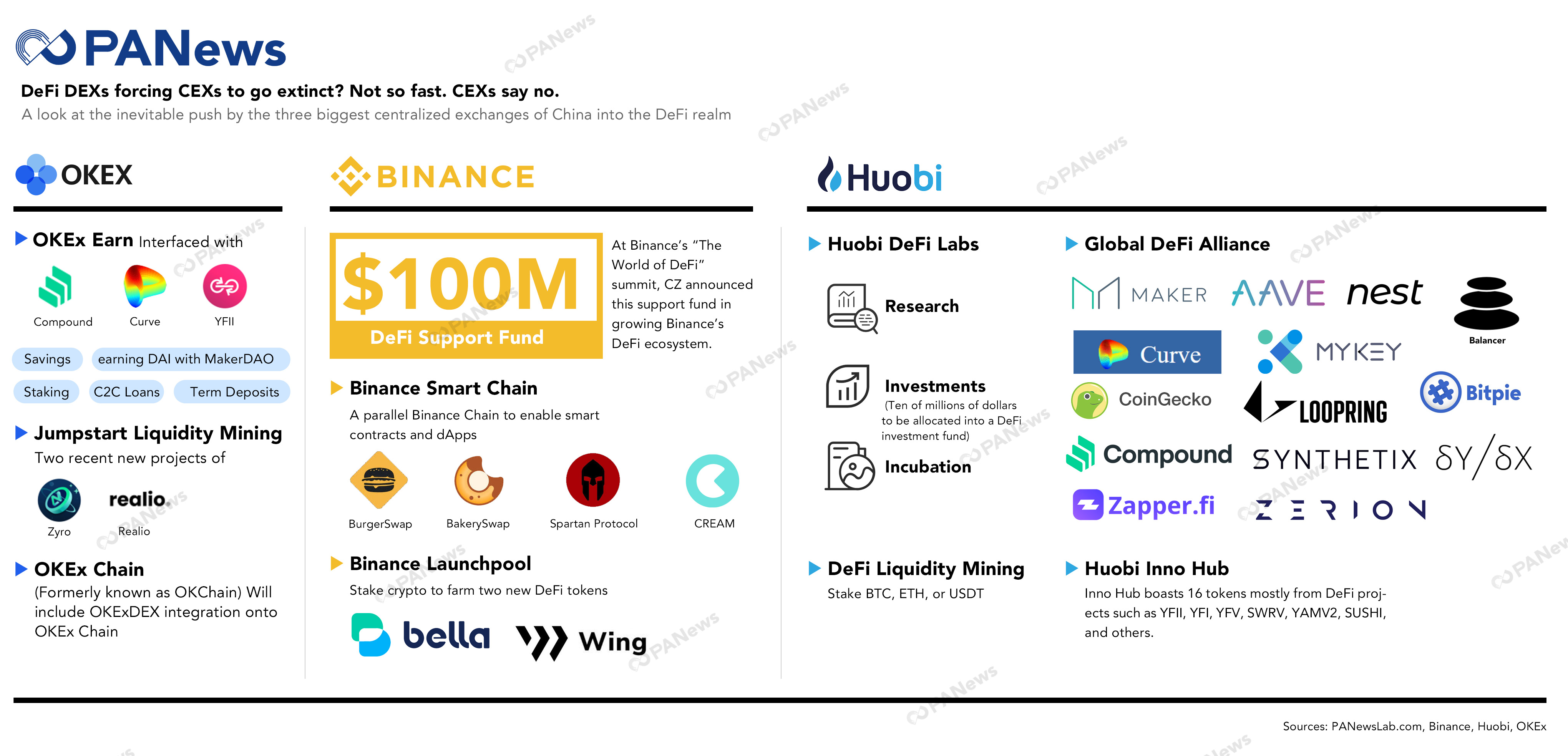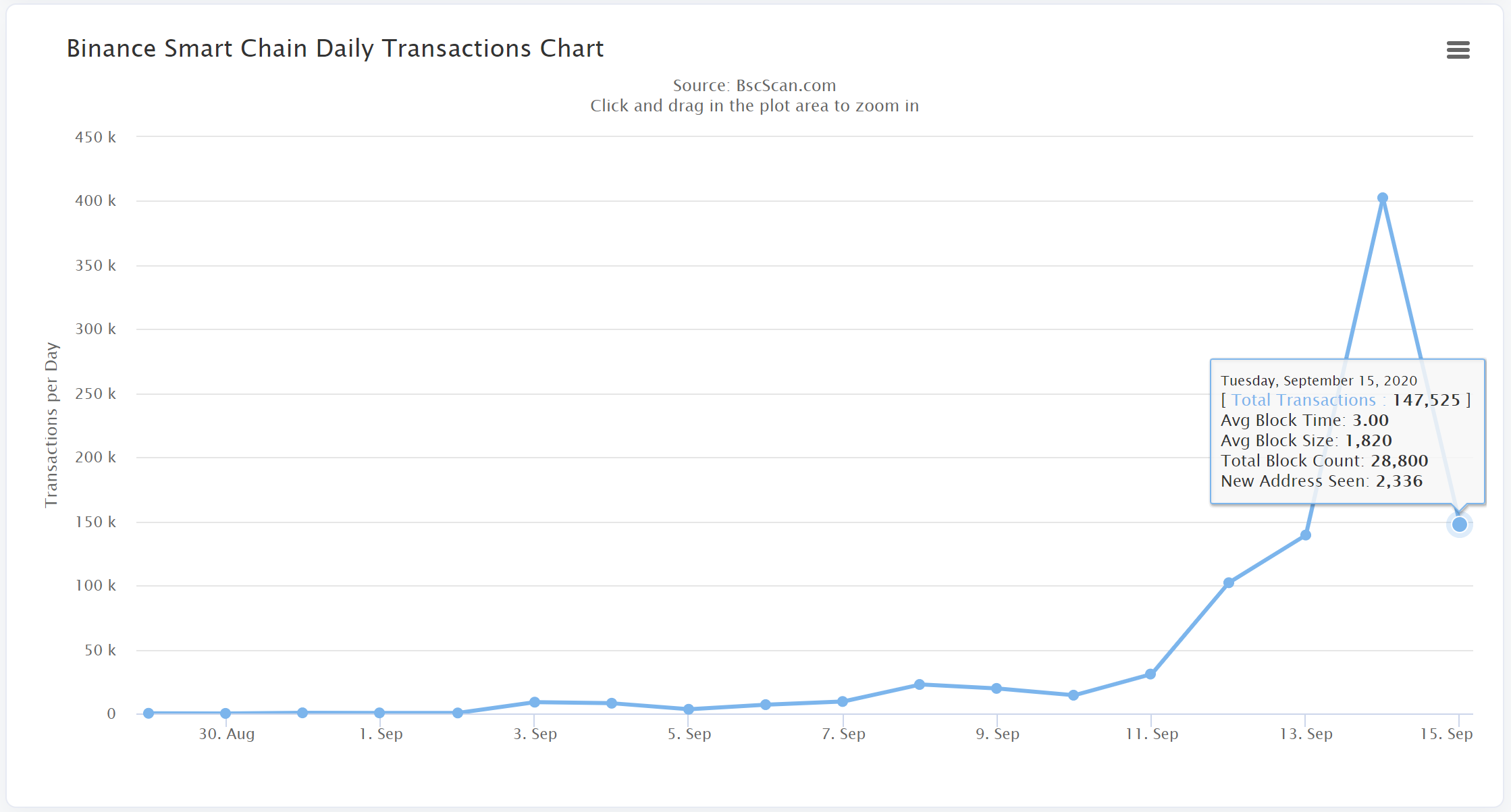
As we have seen DeFi sweep the crypto world the past summer by storm, we are reminded on how fast the crypto-verse can move at lightning pace depriving hardcore crypto heads of adequate sleep. This was all accentuated further with new DeFi food-meme tokens popping by the daily reminding us of the halcyon ICO days of 2017; quickly evoking traditional centralized exchanges to cut up their own listing criteria hurdles in order to join in on the fun. Critics came of course accusing them of going against their own standards of listing reputable, “safe” projects, and instead just seeking out quick cash by listing unaudited token contracts by pseudonymous devs.
And as we saw Uniswap, the darling Ethereum DEX, prompt comparisons of advantageous usages for AMM (automated market makers) versus traditional order books, the natural progression would be to have the debate of DEXs vs CEXs. The trepidation of this was undoubtedly felt by the latter. With any business, the natural inclination is to fight for your moat by whatever means at times. And if this entails joining the trend, then so be it.
In China, the three main CEXs are considered to be Binance, Huobi, and OKEx. Both have a dominant position in spot and derivative trading with robust fiat payment gateways allowing them to onboard users at a faster clip. We’ll take a look at what all three have been doing in getting their own piece of the DeFi pie. Or could I say, CeDeFi?
BINANCE
CZ, CEO of Binance: “CeFi is about to give DeFi a run for its money.”
If we start with Binance, they have fostered two platforms to switch gears into DeFi: Binance Smart Chain and Binance Launchpool.
Now don’t get confused with Binance Chain, which is their native digital asset exchange built on a distributed consensus and launched last year, but Binance Smart Chain (BSC) is a parallel Binance Chain to enable smart contracts and dApps boasting block times of 5 seconds and cheaper transaction fees. Considering that BSC is EVM compatible, there are already similar food-meme’d DeFi projects spawning up such as BurgerSwap ($32M in Total Liquidity as of Sept. 16), BakerySwap ($125M in TVL as of Sept. 16), Spartan Protcol, and CREAM (Ethereum and BSC compatible).
In constant tweeting fashion, CZ has reminded us of the rapid rise of activity on BSC which until yesterday had daily tx volume 40% of ETH yesterday (Sept. 15) but has since cooled off due to a crash in the price of Bakery’s $BAKE leading to some backlash from users in China especially.

(Figure 1) Daily Transactions on Binance Smart Chain over the past few weeks.
The Binance Launchpool, which was announced last Monday, is a new yield farming product which will allow users to farm new tokens (currently only BEL and WING) in return for staking BNB, BUSD, ARPA, ONT, and USDT. The two new tokens represent the projects of Bella Protocol (TVL $620M as of Sept. 16), another yield farming platform, and Wing (TVL $124M as of Sept. 16), a credit-based, cross-chain DeFi platform built on Ontology.
Bella Protocol recently raised $4M in a seed funding round by Arrington XRP Capital.
But perhaps the biggest announcement came from Binance’s ‘The World of DeFi’ summit held last week in which he announced a $100M support fund for DeFi projects on BSC. Ultimately with the goal of supporting Binance’s DeFi ecosystem and bridge the DeFi and CeFi ecosystems.
OKEX
Jay Hao, CEO of OKEx: “It is worth noting that the participation of CEXs will also help the DeFi industry in a 'survival of the fittest' type of way by weeding out the bad actors.”
In not as grand of fashion as Binance, OKEx has also carved out a DeFi space for themselves through the launch of its hybrid lending aggregator, OKEx EARN, announced on August 30th. The OKEx Earn product currently offers users to earn passive income through savings, term deposits, staking, C2C loans, and earning DAI with MakerDAO. OKEx has also jumped on the bandwagon by integrating the hot popular DeFi platforms such as Compound, Curve, and YFII onto OKEx’s EARN interfaces.
OKEx has also launched a Jumpstart Liquidity Mining platform allowing users to stake early and earn tokens of new DeFi protocols. So far two new projects have been launched with Zyro (automated liquidity protocol built on Zilliqa) and Realio (real estate blockchain fund enabler).
OKEx Chain, transformed from OKChain, is also stemming its own DeFi chain called, OKExDEX, in allowing users to issue crypto, create trading pairs, and trade on AMMs as well as order books.
HUOBI
Leon Li, CEO of Huobi Group: "Huobi as the leading crypto financial services provider in Asia and worldwide, our mission is to provide the best crypto financial products and services to our users regardless it is CeFi or DeFi,"
Huobi has taken on a slightly different approach through their launch of Huobi DeFi Labs, which will allocate tens of millions of dollars to a DeFi investment fund. The team consisting of 4 research and investment professionals will be focused on research, investments, incubation of DeFi projects. Through Huobi DeFi Labs, the team has launched a global DeFi alliance with the goals of establishing a universal protocol standard for the DeFi realm and improve communications within the DeFi ecosystem. As of now, 14 members have joined the ranks along with Huobi DeFi Labs.
In addition to the more institutional approach to DeFi, Huobi has launched a new token listing pathway called Huobi Inno Hub with the intent of allowing a platform for high-potential projects in blockchain industry on Huobi Global platform. As of now, the Inno Hub boasts 16 tokens mostly from DeFi projects such as YFII, YFI, YFV, SWRV, YAMV2, SUSHI, and others.
And as in similar fashion with Binance and OKEx, Huobi also has its own DeFi crypto savings product to compete with yield farming. Called DeFi liquidty mining on their site, users can deposit their BTC, ETH, or USDT and earn annual yields up to 90%.
Along with HBTC, which is a tokenized bitcoin by Huobi enabling users to use their bitcoin values on Ethereum, Huobi will also be providing 3 other H-tokens including DOT, LTC, and BCH onto the Ethereum protocol, further enabling HODL’ers of those assets to participate in DeFi.
CONCLUSION
By the time this article is completed and published, there probably will be new initiatives, new DeFi projects on these CEXs, new announcements, new funding, etc. That is how blistering fast this industry is moving at. And these CEXs definitely have the firepower to keep in lock step with the DeFi trend. Just remember, these same CEXs also got into the bitcoin mining arena and are already ranked in the top 10 of mining pools based on the amount of hashrate they command. Although, the past few weeks we have seen numerous report stemming from the Chinese community of an anti-CEX movement with users rotating capital out of CEXs onto existing DEXs, it’ll be less surprising to see this not affecting CEXs at all. CEXs getting a hint of trepidation from the footsteps of DEXs is in similar fashion to traditional banks buying up fintech firms. The relationships are similar and those same traditional banks have only gotten bigger. Expect more from the big CEXs into DeFi going forwards.












